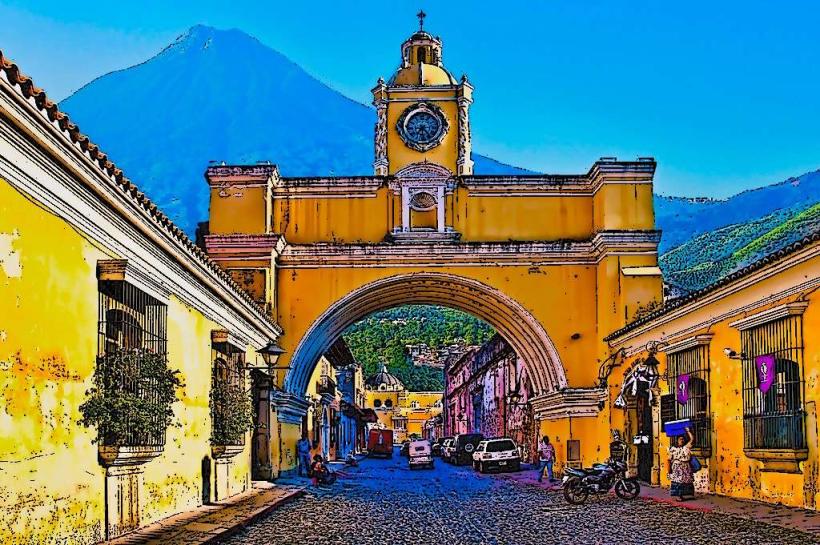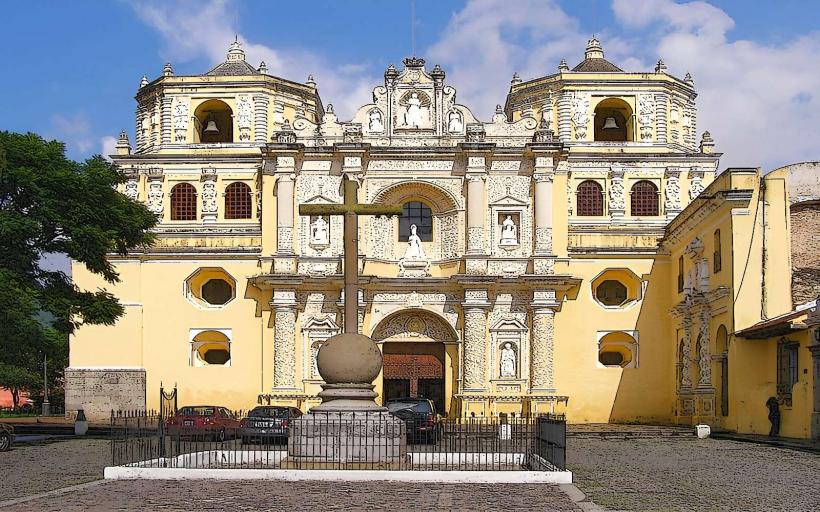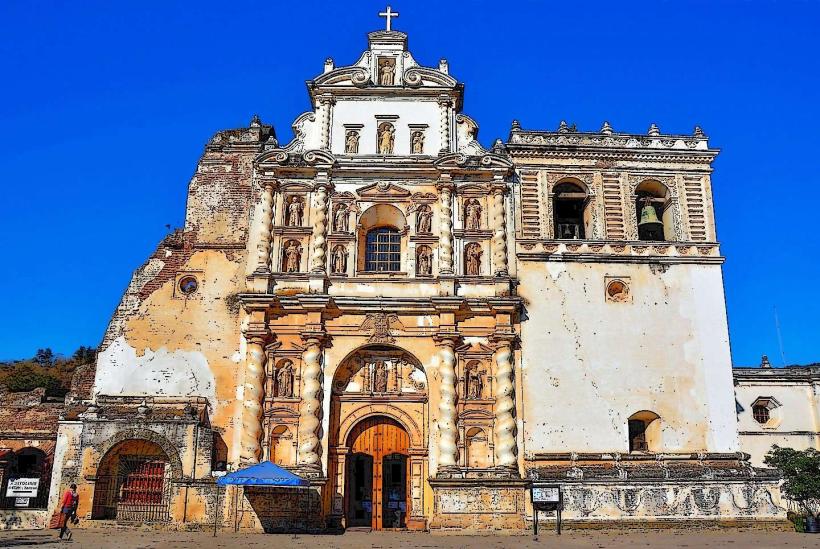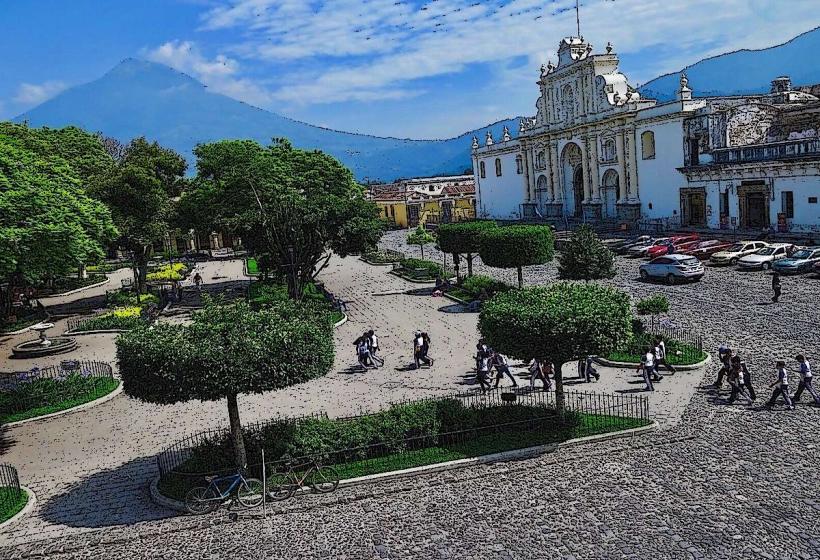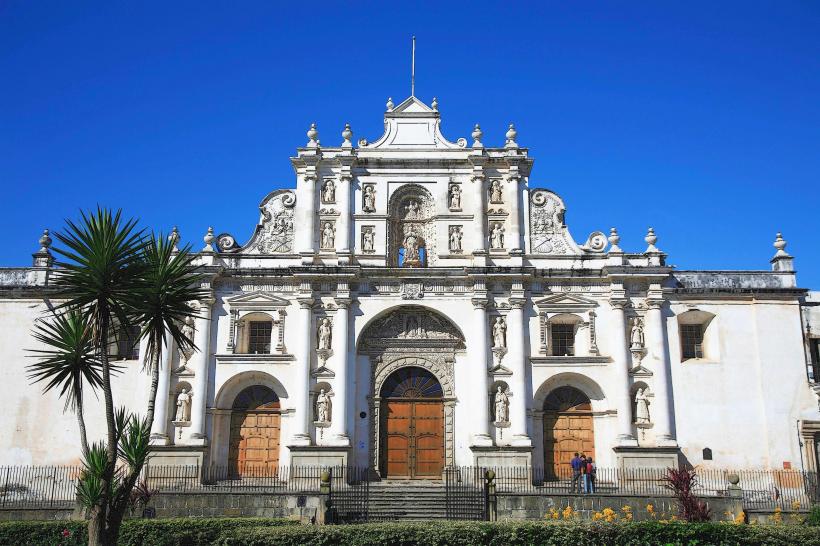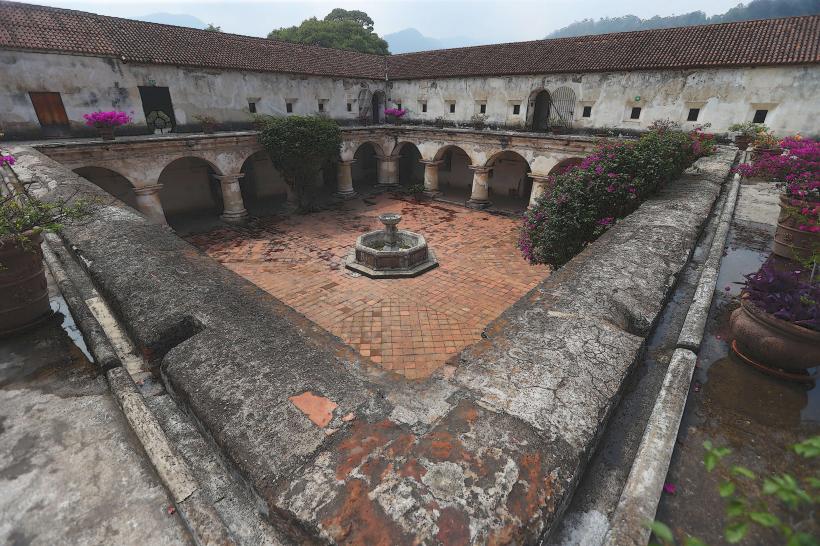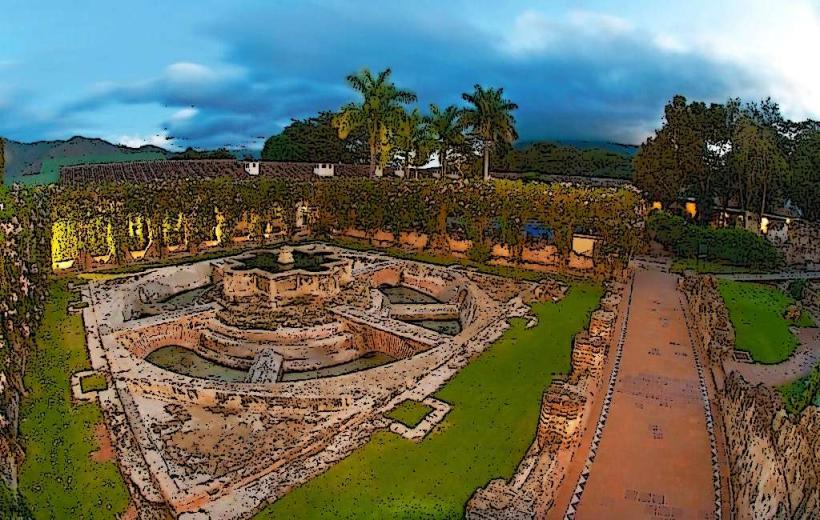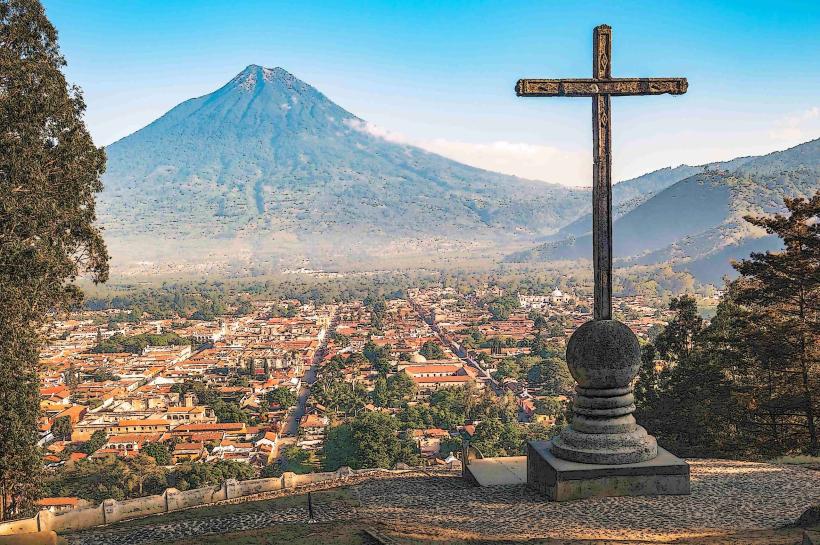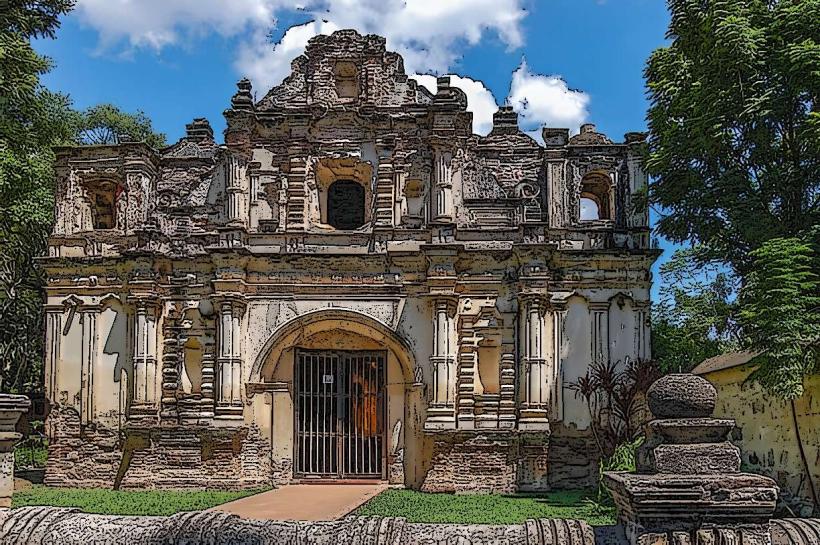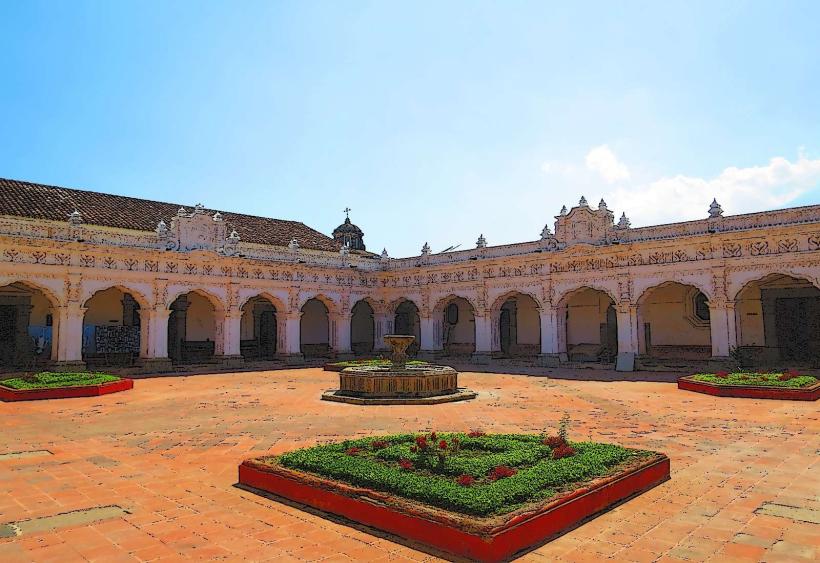Information
City: Antigua GuatemalaCountry: Guatemala
Continent: North America
Antigua Guatemala, often simply called Antigua, is a picturesque colonial city in the central highlands of Guatemala. It is one of the most popular tourist destinations in the country, known for its well-preserved Spanish colonial architecture, cobblestone streets, and stunning views of surrounding volcanoes. The city holds historical and cultural significance and was designated a UNESCO World Heritage site in 1979 due to its unique architecture, urban layout, and importance in the history of Central America.
Geography and Climate
Antigua is located about 45 kilometers (28 miles) west of Guatemala City, nestled in a valley surrounded by three volcanoes: Agua, Fuego, and Acatenango. The city lies at an altitude of approximately 1,500 meters (4,920 feet) above sea level, which contributes to its mild climate.
The climate is temperate, with average temperatures ranging between 20°C and 28°C (68°F to 82°F). The dry season, from November to April, is the best time to visit due to sunny and warm weather. The rainy season lasts from May to October, bringing afternoon showers, but the city remains a pleasant place to explore even during this period.
History
Antigua Guatemala was founded in 1543 by Spanish conquistadors and became the capital of the Captaincy General of Guatemala, which included present-day Guatemala, El Salvador, Honduras, Nicaragua, and Costa Rica. It was one of the most important cities in the Spanish Empire in the Americas and a center for trade and culture.
However, the city was severely damaged by a series of earthquakes in the 18th century. In 1773, the Santa Marta earthquake caused extensive destruction, and the capital was moved to its current location, Guatemala City, due to the damage and the threat of future earthquakes. Despite its decline, Antigua remains a symbol of Guatemala’s colonial history and continues to attract people from around the world for its charm and heritage.
Urban Structure and Development
Antigua is known for its colonial layout, which is a combination of Spanish and indigenous influences. The city’s streets are laid out in a grid pattern with the Plaza Mayor (Main Plaza) at the center. The city is filled with beautiful colonial buildings, many of which are churches, convents, and mansions, most of which were constructed using volcanic stone.
The Central Park is the heart of Antigua, where locals and tourists gather. Surrounding the park are important buildings, including the Palacio de los Capitanes Generales (Palace of the Captains General), which was once the seat of the colonial government, and the Catedral de Santiago (Cathedral of Santiago), which is still used for religious ceremonies today.
Much of the city has been carefully preserved, with restoration projects ensuring that the buildings and streets maintain their historical charm. Despite its small size, Antigua has a lively atmosphere with vibrant markets, cafes, and shops that cater to both locals and tourists.
Economy
Antigua's economy is largely driven by tourism, and the city has a well-developed infrastructure to support visitors. Key industries in the city include:
- Tourism: Antigua is one of Guatemala’s top tourist destinations, attracting visitors for its historical sites, architecture, and cultural events. Many tourists also use the city as a base for exploring the surrounding mountains, volcanoes, and natural parks.
- Coffee Production: The region surrounding Antigua is known for its coffee plantations, and the city serves as a hub for coffee exports. Visitors can tour local coffee farms and learn about the coffee production process.
- Handicrafts: Antigua is a hub for traditional Guatemalan handicrafts. Visitors can find handmade textiles, pottery, jewelry, and other artisanal goods in local markets and shops.
The city also has a growing number of small businesses, including restaurants, hotels, and boutiques that cater to tourists and the expat community.
Demographics and Culture
Antigua is home to a population of about 35,000 people, though the number swells significantly during tourist seasons. The population is diverse, with a mix of indigenous Maya, mestizo (mixed European and indigenous), and expatriates from around the world, particularly North America and Europe.
The city has a rich cultural life, with many festivals and events throughout the year. Some of the most notable include:
- Semana Santa (Holy Week): Antigua is famous for its Semana Santa celebrations, which are considered some of the most impressive in Latin America. The city is filled with religious processions, intricate carpet-making (made from flowers, colored sawdust, and other materials), and vibrant displays of devotion.
- Independence Day (September 15): Guatemala celebrates its independence from Spain with parades, festivals, and cultural events throughout the city.
- La Fiesta de Santo Hermano Pedro (April): This festival honors the patron saint of Antigua, Brother Pedro, with processions, music, and festivities.
The influence of both the colonial era and indigenous Maya culture is evident in Antigua’s daily life, from traditional foods like tamales, pepian, and chiles rellenos, to its colorful markets and festivals.
Transportation
Antigua is well-connected by road to Guatemala City and other parts of the country. Although the city has no airport, the La Aurora International Airport in Guatemala City is the closest major airport, about an hour's drive away.
- Public Transportation: Buses (called "shuttles") run between Antigua and major cities like Guatemala City, Lake Atitlán, and Cobán. These services are popular among tourists, as they offer comfortable, air-conditioned transportation.
- Walking: Due to its small size, Antigua is best explored on foot, and walking around the cobblestone streets is one of the best ways to experience the city's charm.
Social and Security Situation
While Antigua is generally considered safe for tourists, petty theft (such as pickpocketing) can occur in busy areas, especially during peak tourist seasons. The city is well-patrolled by local police, and most hotels and businesses take security seriously. It is advisable for visitors to be cautious and aware of their surroundings.
The city has good healthcare facilities, including private clinics and a hospital, and the surrounding areas also offer several medical services. Additionally, Antigua is home to a large expatriate community, with many retirees and volunteers from abroad.
Environmental Concerns
Antigua is located in an area rich in natural beauty, and efforts have been made to preserve the surrounding landscapes. Some of the environmental challenges include:
- Waste Management: Like many tourist cities, Antigua struggles with waste management, particularly in areas with high foot traffic.
- Water Conservation: Due to the city's growth and the surrounding mountainous terrain, water conservation is a concern for both residents and visitors.
- Volcanic Activity: The nearby Fuego Volcano is an active volcano, and while it’s a popular tourist attraction, eruptions pose an occasional risk to the surrounding areas.
Conclusion
Antigua Guatemala is a beautifully preserved city that offers a unique glimpse into Guatemala's colonial past, complemented by the vibrant culture of its present. With its historical architecture, festivals, stunning views, and friendly atmosphere, Antigua remains one of Central America’s most beloved cities and an essential destination for travelers looking to experience the heart of Guatemala.

